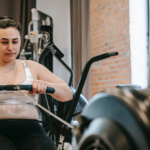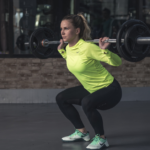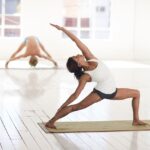What Are Planks Good For?
The plank is an exercise that seems simple on the surface but offers immense benefits for your overall strength and health. This signature core move that involves holding your body in a straight line while resting on your forearms and toes trains multiple muscle groups at once and can profoundly improve your physical fitness. From building a strong foundation for your core and back to enhancing posture and balance, planks provide a low-impact yet highly challenging workout. In this article, we’ll explore why you need to start incorporating the tried-and-true plank regularly into your routine, and how holding this famously burning position can reduce back pain, boost muscle endurance, and bring transformative results to your physique and wellbeing. Get ready to feel the burn and build your body’s infrastructure from the ground up!
Why are planks an effective workout?
Planking is an incredible full-body exercise, which means that it targets the muscles in your upper body, core, lower back, and lower body. It also helps stabilize your spine in neutral alignment and can assist in stabilizing the pelvis. This is one of the reasons physiotherapists like planking so much!

Our physiotherapists often recommend patients incorporate some variation of the plank into their workout regime.
During a plank, the majority of muscle engagement resides in your core muscles. There are four main muscles in your core that are activated during a plank; transversus abdominis, rectus abdominis, internal obliques, and external obliques. Additionally, planking exercises also activate the muscles in the hips, back, and shoulders. Having a solid core can help reduce back pain, improve balance, and optimize your athletic performance.
Why should you work out your core?
We often focus on training the most visible muscles like the biceps and quads. But what about the deeper core muscles? Strengthening your core should be a key priority when designing any fitness program.
Your core refers to the muscles in your abdomen, back, hips, and pelvis which provide stabilization and support for your spine and body. A weak core negatively impacts your posture, balance, and coordination. On the other hand, building core strength confers many physical and mental benefits. A strong core helps prevent injury and muscle strain in your back and joints during everyday activities. Your core also powers movement for exercises like squats, deadlifts, and presses. When your core is weak, you risk compensating with poor form and straining other muscle groups.
Additionally, core training improves athletic performance in sports and helps build a toned, defined physique. The core muscles are active in almost every movement we make, so it’s essential to condition them. Planks, bridges, crunches, and other targeted moves can help develop a rock-solid core.
Finally, core exercises promote mental strength. Pushing through the burn requires focus and determination. Building core strength improves confidence, mood, and focus. In short, don’t neglect your core – train it with the intention of unlocking greater power, stability, and self-assurance.

Do planks help target belly fat?
If you are looking to specifically target belly fat, planks are a great exercise to include in your routine. They engage multiple muscle groups, including the abdominals, and can help boost your metabolic rate. To maximize the benefits of planking, be sure to do them regularly and include other compound exercises in your routine as well.

Can You Lose Belly Fat By Planking?
A strong and stable core is important for everyday movements like bending over to pick something up. Athletes rely on a stable core to perform movements like swinging a baseball bat or hitting a golf ball down the green. Planks can help tone the core, improve your stability and balance, and provide other benefits.
Forearm Plank – The best type of planks for a solid core
Instructions: While lying on the floor, with your forearms underneath your shoulders, lift your torso into a straight line. Ensure that your legs are straight, your toes are firmly on the ground and your neck and spine are in a neutral position. Hold for as long as you can, then repeat the process 3 times.

For individuals looking for a more advanced version of the plank above, with elevated levels of muscle engagement, we recommend moving your forearms up. This way, instead of being underneath your shoulders they will be closer to your head. We promise this will be very difficult as it engages more muscles.
Another variation of the plank that is effective at building your core is a plank with shoulder taps. While assuming the plank position, lift your left forearm up and touch your right shoulder with that hand before bringing it back down. Repeat with the other hand/shoulder. Your body will be working extra hard to try to regain balance and compensate.
For more variations check out physio pedia
Planking Tips from a Physiotherapist
- To prevent back strain or injury, engage your core during the entire movement.
- Ensure your body forms a straight line from your head to your heels.
- Keep your back flat and bum down
- Focus on the quality of the plank rather than how long you can hold it.

Planking is a great way to strengthen your core and improve your posture. It’s also easy to do at home with no equipment required, making it a perfect exercise to add to your routine. Planking is a simple but challenging exercise that can help you see real results in just a few weeks! We hope this article was informative.




